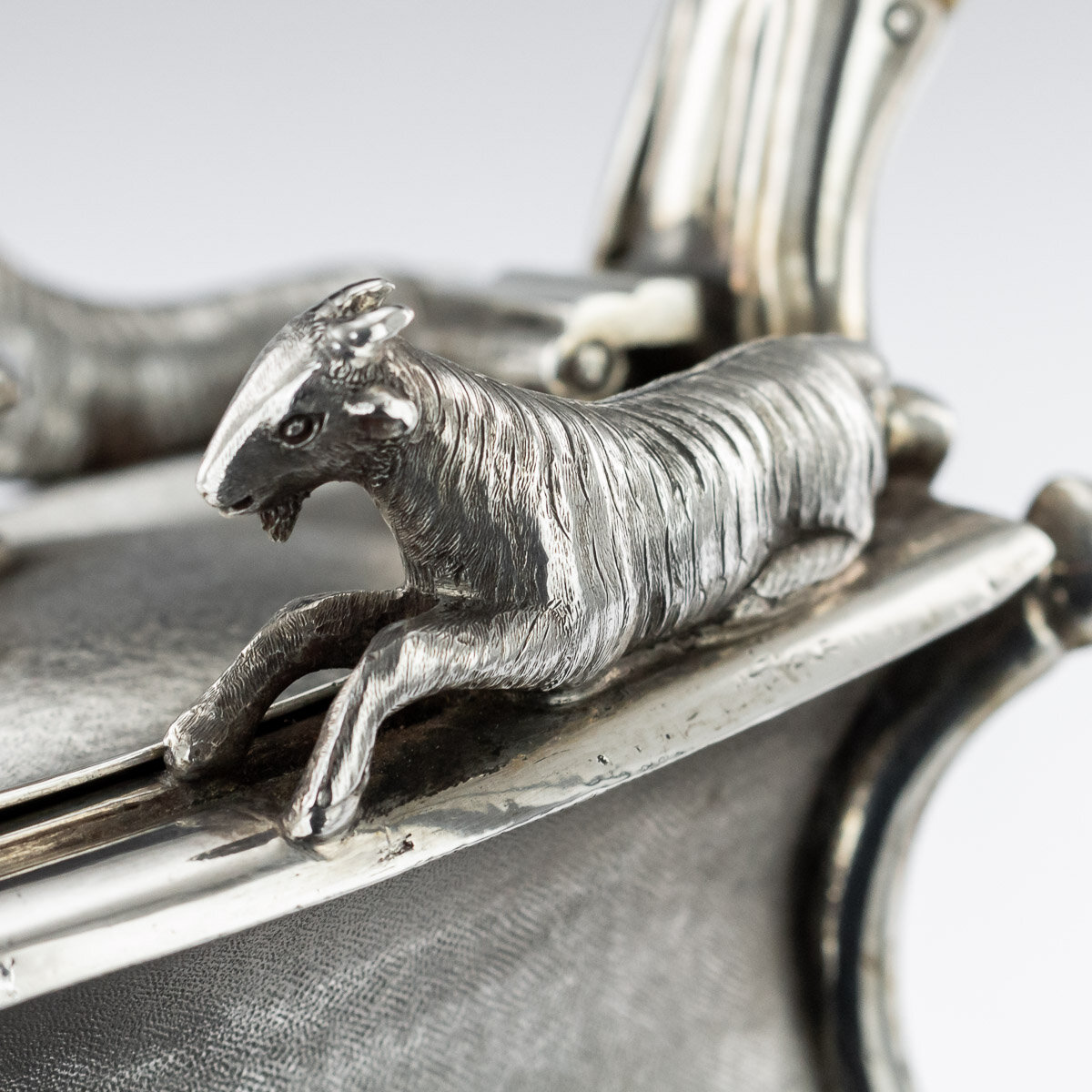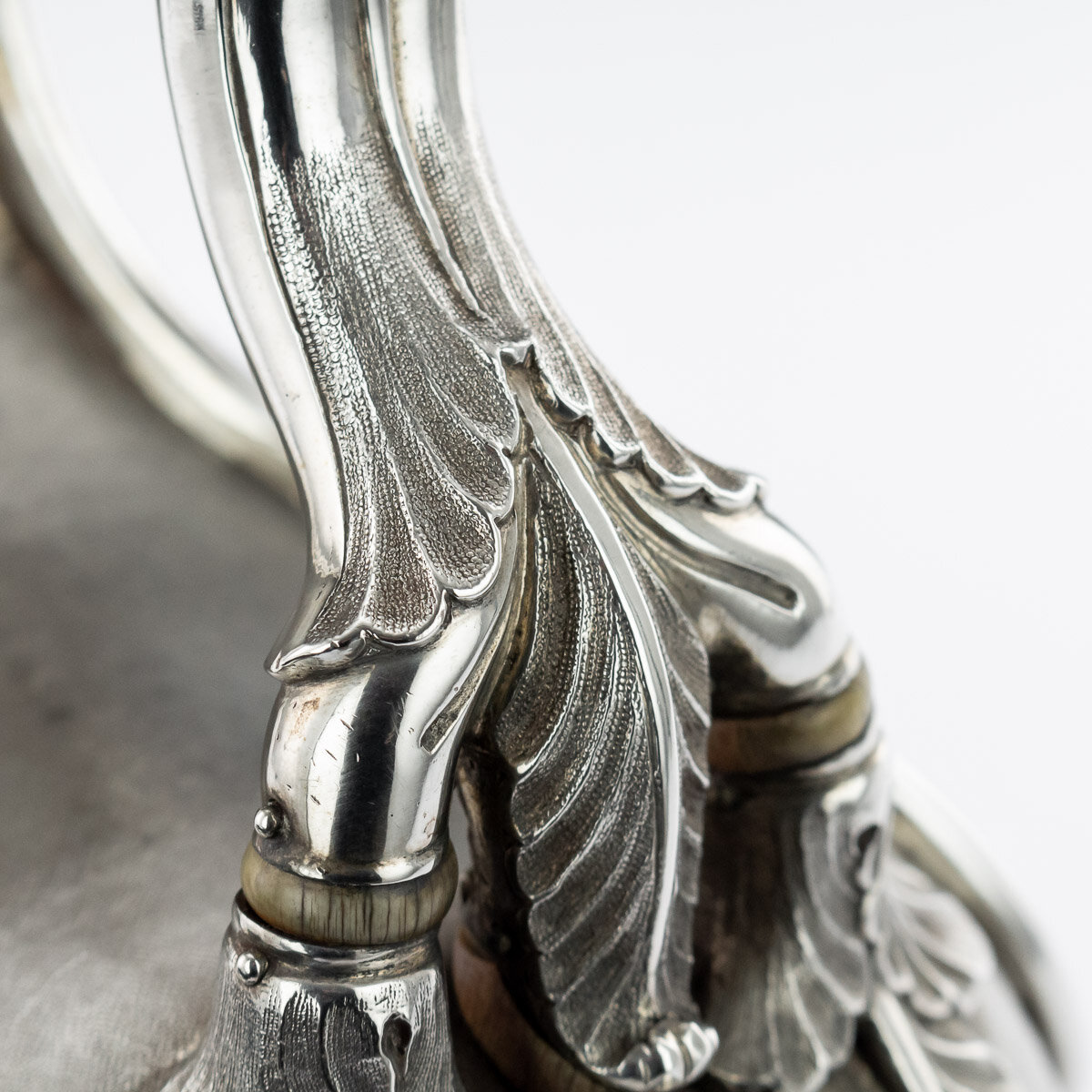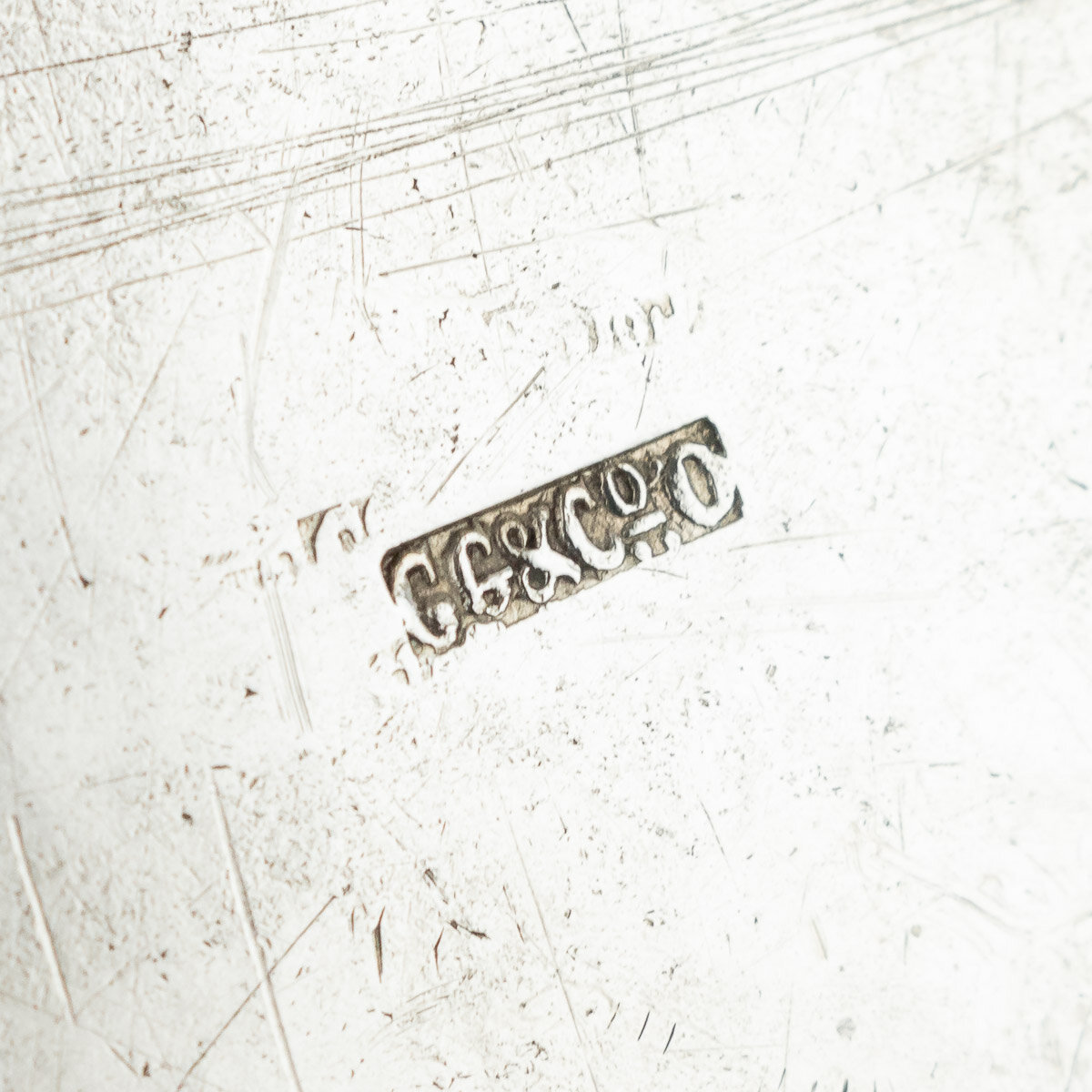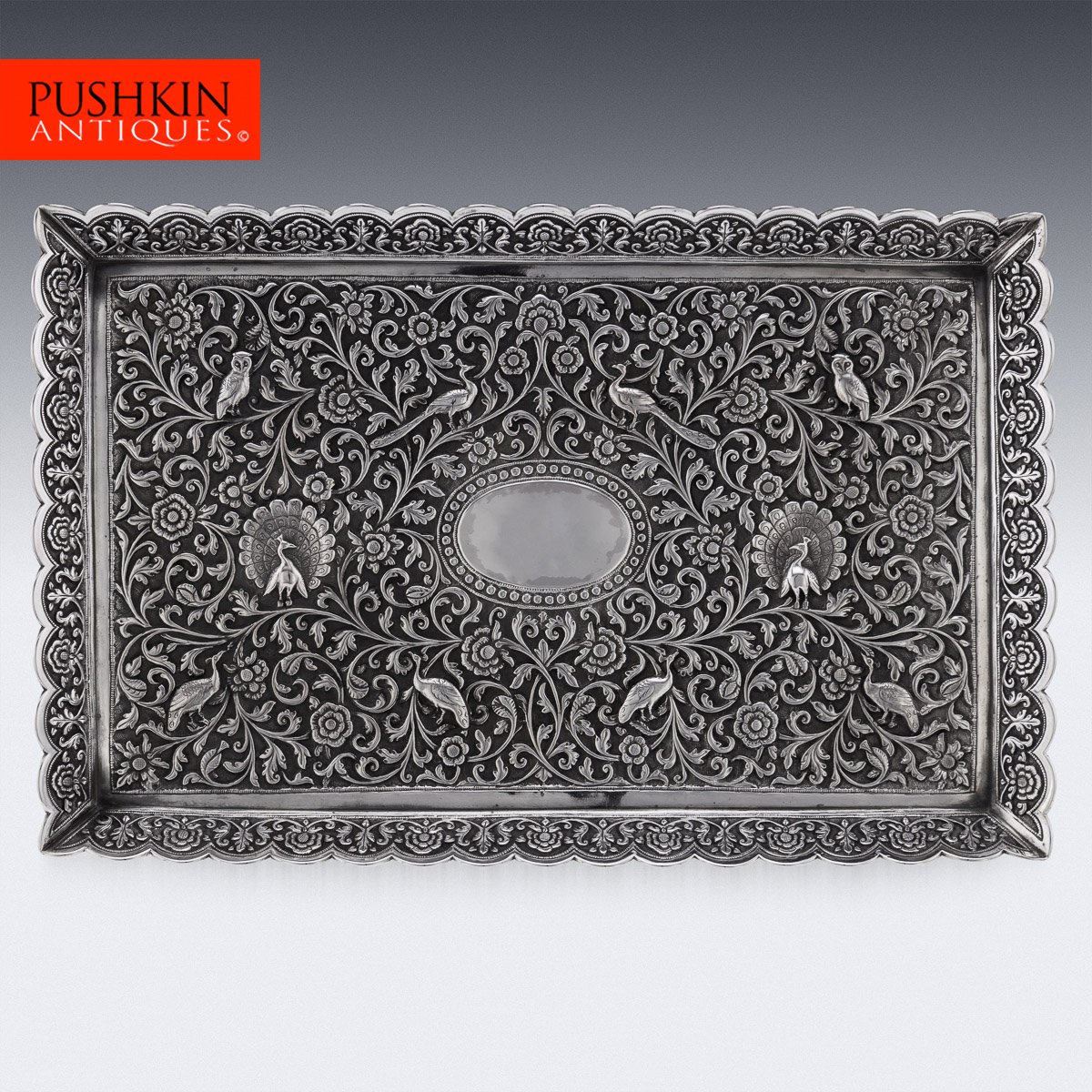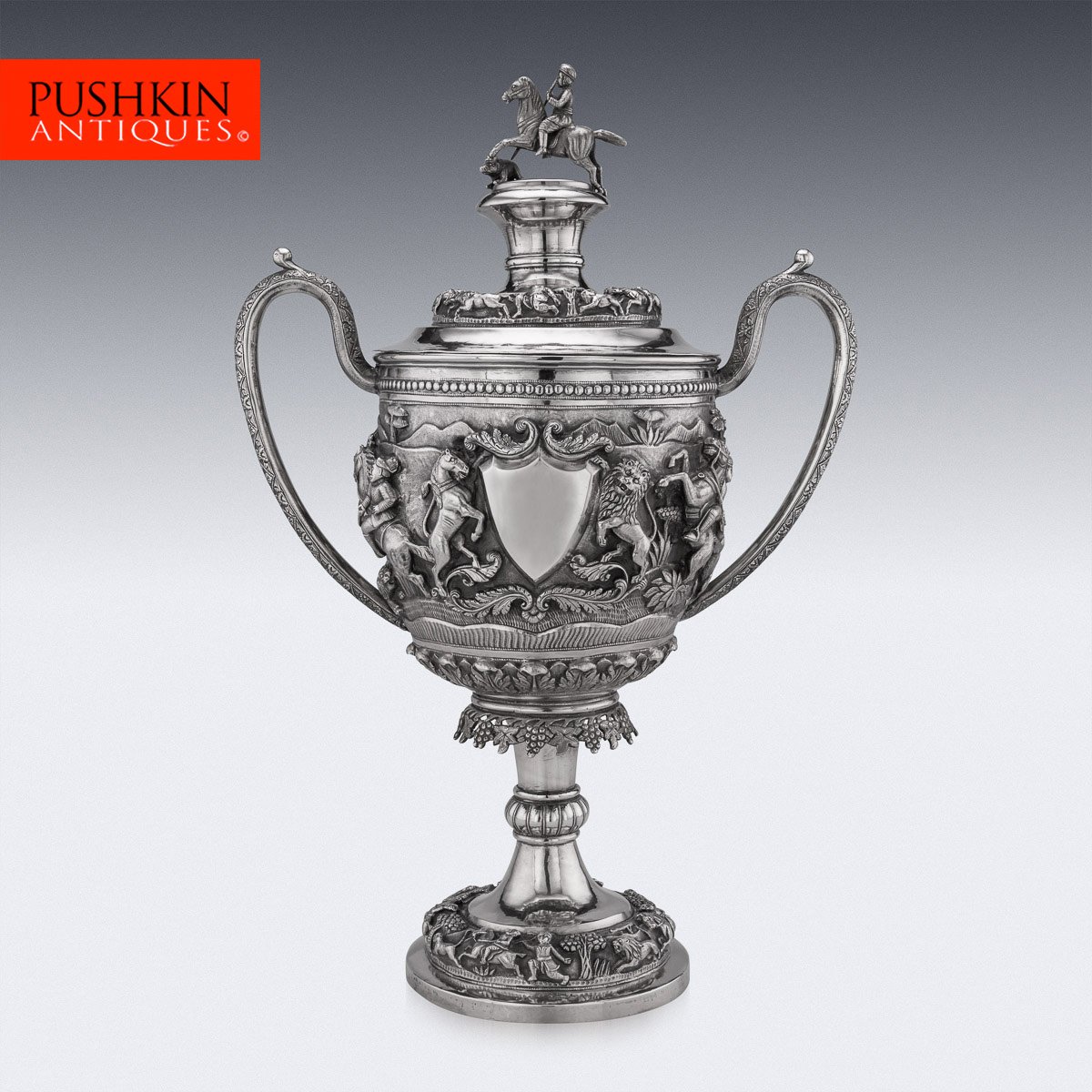ANTIQUE 19thC INDIAN COLONIAL SOLID SILVER ASKOS JUG, GEORGE GORDON & CO c.1840
19th Century Indian Colonial silver Askos jug, applied with an openwork acanthus-capped handle with putto terminal, the rim applied with two fully-modeled rams, inside richly parcel gilt.
Hallmarked Indian colonial silver (925+), Madras, year 1840's, Maker George Gordon & Co.
Reference Number: A6355
DESCRIPTION
Antique 19th Century Indian Colonial solid silver Askos jug, applied with an openwork acanthus-capped handle with putto terminal, the rim applied with two fully-modeled rams, inside richly parcel gilt. Hallmarked Indian colonial silver (925+ standard), Madras, year 1840's, Maker George Gordon & Co. This family business originally started by Hugh Gordon, son of James Gordon, silversmith in Aberdeen. Hugh Gordon moved to Madras in 1792 and the following year opened his own business giving birth to one of the most important dynasties of colonial silversmiths active in Madras in the 19th Century. In 1821 his grandson George Gordon founded the company George Gordon & Co. in partnership with his brother Robert Gordon III, John Law and Andrew Barron. The company produced silverware in the Regency or Georgian style, sometimes featuring traditional Indian decorations and gods and retailed both to wealthy British citizens and Indian aristocrats. Although George Gordon retired to UK in 1830s, the firm continued operating as Gordon & Co. in Madras until 1848, using the maker’s mark ‘GG&Co’ for its items.
Askos is the name given in modern terminology to a type of ancient Greek pottery vessel used to pour small quantities of liquids such as oil. It is recognisable from its flat shape and a spout at one or both ends that could also be used as a handle. They were usually painted decoratively like vases and were mainly used for storing oil and refilling oil lamps. These were extensively traded in and around the Mediterranean. An example of this is UC47602 in the Petrie Museum's collection, which is a black glazed vessel with an almost metallic appearance and was originally produced in Greece (the main production was in Attica) and was excavated in Memphis. The present example is probably a copy of one made in the mid 1830's and retailed by Storr & Mortimer (workshop of Paul Storr) and exported to India, which Storr copied from the antient Roman bronze askos, having been discovered at Herculaneum and is now in the National Archaeological Museum of Naples (inventory no. 69167).
The base of the jug is engraved and the inscription reads: 'Presented to J. Sanderson Esqre. by W. E. Cochrane Esqre.' It may be a coincidence but in the Madras Exhibition of 1855 two of the exhibitors mentioned on the same page of the Official and Descriptive Catalogue are J. Sanderson, Esq., Medical Establishment (class CLVIII) '1 Piece of Kyabokka wood' and W.E. Cochrane, Esq., Civil Service, (class XLIV) '1 Specimens [sic] of Photography.' It seems likely that J. Sanderson was Dr. James Sanderson (1812-1895), a native of Dunbar, Scotland, who was a medical student at Edinburgh University. In 1836 he was appointed Surgeon in the Madras Medical Service. He returned to Scotland in 1863 and died in 1891.
CONDITION
In Great Condition - No Damage.
SIZE
Height: 25cm
Width: 23 x 14cm
Weight: 1470g









